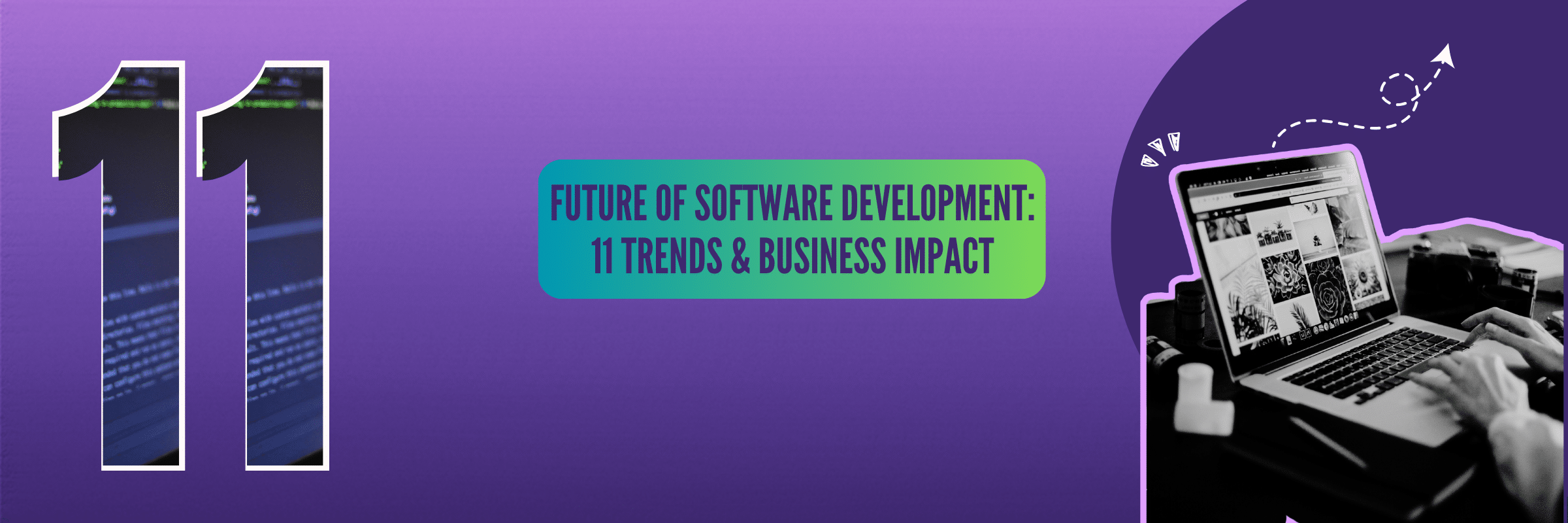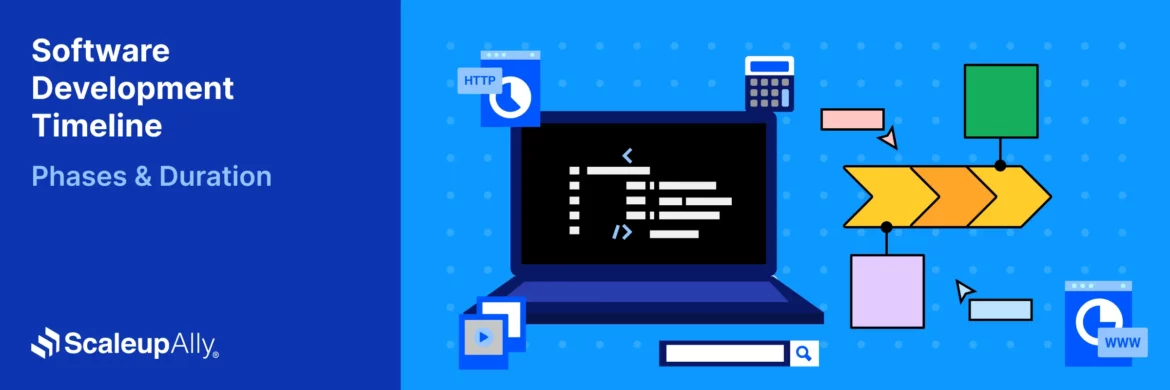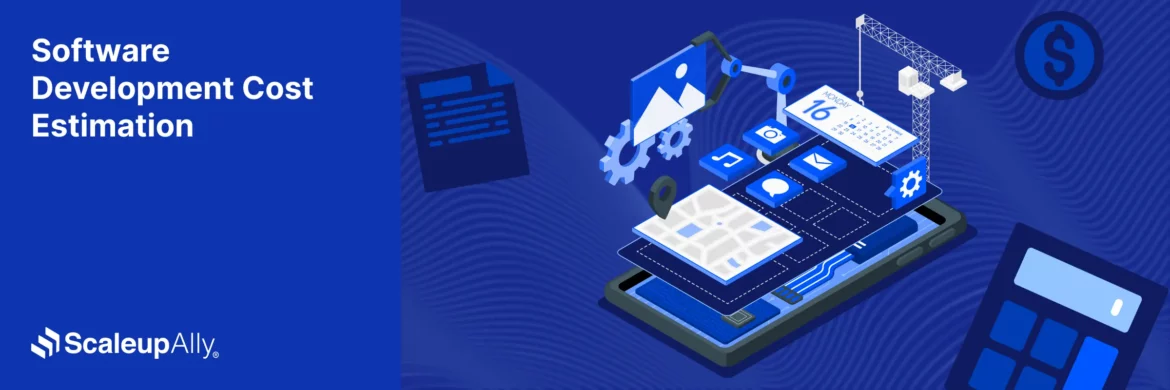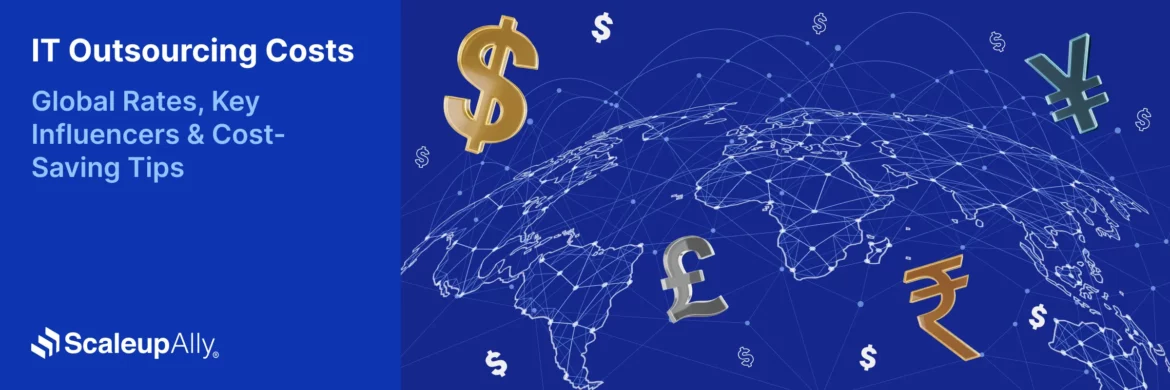
Future of Software Development: 11 Trends & Business Impact
Suprabhat Sen | May 1, 2025 , 10 min read
Table Of Content
In 2020, software bugs cost businesses $2.08 trillion. However, this financial loss is just the beginning because when critical systems fail, customers lose trust in businesses, competitors move in and grab a larger market share, and top talent looks elsewhere.
It’s no surprise, since software development is evolving faster than ever today, and companies that stick to the outdated methods of doing things are falling behind, while those embracing modern software development services are gaining a competitive edge.
In this blog, we break down 11 key trends that forward-thinking businesses are leveraging for the future of software development, not only to solve today’s challenges but to drive long-term growth and resilience.
Key Takeaways
- Rather than replacing developers, AI is creating a divide between companies that use AI-augmented development and those falling behind with traditional methods.
- Businesses need both technical literacy and strategic vision to survive the next wave of software evolution.
- Development is becoming democratized through low-code platforms, allowing non-technical teams to build solutions without relying on IT departments.
- Security and data architecture must be foundational to development rather than afterthoughts—vulnerabilities now pose existential business risks.
- Software development has transformed from a technical function to a core strategic capability that directly impacts business competitiveness.
What does the Future hold for Software Development?
By 2026, 75% of large enterprises will be using low-code platforms. It is also no surprise that at Google, AI now generates over 25% of new code for its products, with human engineers reviewing and managing these contributions. This doesn’t mean developers will be replaced. Instead, it means that their roles as software engineers will be further enhanced to write clean, optimized code at a faster pace than ever before.
The rise of microservices architecture tells a similar story. A 2021 survey found that 37% of organizations were using microservices partially. Additionally, a 2020 study revealed that 29% of companies were migrating or implementing a majority of their systems using microservices, driven by the need for more scalable, flexible systems.
And when it comes to security, the shift is just as clear. Teams that integrate security from day one report 30% fewer critical vulnerabilities.
Change is coming, but how soon will you adapt to this change? Will you lead the change, or scramble to catch up as more agile competitors race ahead?
Software Development Trends that Would Dominate the Future
1. AI-Driven Software Engineering
Instead of replacing developers, AI serves as a coding companion that handles repetitive tasks while humans focus on creative problem-solving. The artificial intelligence sector is growing at 36.8% annually, set to hit $150.2 billion by 2030. This growth can only mean a transformation of how code gets written.
Companies that implement AI coding assistants report cutting development time by 30-40% on standard features. This trend means that in the near future of software development, developers who are assisted by AI will outperform those who aren’t.
2. The Broader Potential of Blockchain Technology
Blockchain technology revolved around cryptocurrency but a change is coming with blockchain slipping into mainstream development. Its decentralized architecture solves trust problems that traditional databases can’t. Between 2020-2025, the blockchain sector reached 67.3% CAGR, driven by rising demand for decentralized applications.
Developers are building identity verification systems, smart contracts, and voting platforms that eliminate middlemen and reduce fraud. The next wave of enterprise software will treat blockchain as standard infrastructure rather than exotic technology.
3. Progressive Web Apps (PWAs)
Native app development is giving way to PWAs that combine web accessibility with app-like experience. These lightweight applications load instantly and work offline without consuming device storage. Companies implementing PWAs report 137% higher user engagement and nearly 43% lower bounce rates. PWAs cost less to develop while reaching both mobile and desktop users with a single codebase.
For businesses facing tight budgets and aggressive timelines, PWAs offer an escape from the resource-intensive cycle of maintaining separate native apps for each platform.
4. Creating Immersive Experiences with AR and VR
Software boundaries are blending with physical reality as AR/VR development moves from gaming to practical business applications. Remote training, virtual showrooms, and collaborative design spaces are becoming standard features in enterprise software. The AR/VR market is accelerating toward $58.1 billion by 2028, growing nearly 11% annually.
Forward-thinking development teams are already building AR interfaces for industrial maintenance, medical visualization, and customer service applications. Companies that integrate these technologies now will establish years of advantage over competitors who wait for the technology to mature.
5. Modernizing Big Data Architecture
Software design now starts with data architecture rather than treating it as an afterthought. Applications built around massive data processing are becoming the norm across industries. The Big Data Analytics market will hit $103 billion by 2027, reflecting how central data processing has become to modern software. Development teams are shifting from traditional databases to distributed processing frameworks and real-time analytics engines.
The future of software development means building applications that can process terabytes of information without performance degradation, while transforming raw data into actionable intelligence at unprecedented speeds.
6. Security-Driven Software Development
Cybersecurity is no longer a final checkpoint but the foundation of modern development. With cyber attacks targeting software vulnerabilities increasing 400% during COVID-19, protection can’t be bolted on later. The global cybersecurity market will reach $298.5 billion by 2028 as companies try to protect digital assets. Forward-thinking development teams now embrace “shift-left” security, where threat modeling begins before writing code.
This cuts remediation costs by up to 60% compared to fixing vulnerabilities after deployment. Tomorrow’s most successful applications will prioritize user protection from initial design through each update.
7. Integrating Natural Language Processing into Applications
Your software will understand users rather than forcing users to understand software. NLP advancements are bringing conversational interfaces and sentiment analysis into mainstream applications. The NLP market will reach $68.1 billion by 2028, driven by voice assistants and language-processing tools. Progressive companies are already embedding natural language capabilities into customer service systems, analytics dashboards, and productivity applications.
The gap between human communication and computer interaction is narrowing. Successful development teams are those designing products around how people naturally speak and write rather than forcing users to learn rigid command structures.
8. Agile Practices in a Post-Scrum Era
Software methodologies are maturing past rigid frameworks toward hybrid, context-appropriate approaches. Organizations practicing agile methods enjoy 64% project success rates and 60% revenue growth compared to traditional development. Tomorrow’s agile looks less like textbook Scrum and more like custom-fitted methodologies blending various approaches.
Leading teams now adopt continuous deployment with automated quality checks rather than artificial sprint boundaries. This shift represents maturity in development culture, moving from following prescribed rules toward applying agile principles intelligently based on business needs and team dynamics.
9. Cloud-Native Development
The development paradigm has fully shifted from “build, then deploy to cloud” to “build within cloud ecosystems from day one.” Applications designed as interconnected microservices running in containerized environments are becoming standard. Cloud computing improves development productivity by 38% through managed services that eliminate infrastructure management.
Leading teams now build applications composed of discrete, independently deployable services rather than monolithic codebases. This architectural approach supports rapid scaling and resilience, allowing businesses to adapt quickly as market conditions change.
10. No-Code/Low-Code Expansion
Development is democratizing as visual programming platforms enable non-technical teams to build functional applications. Business experts can now create workflow automation and data visualization tools without writing traditional code. Cloud-based Business Process Automation software reached $41.8 billion in 2023.
Progressive organizations use these platforms to clear developer backlogs, letting technical teams focus on complex problems while business units handle straightforward automation. This trend doesn’t threaten professional developers but enhances their impact by removing routine tasks from their workflow.
11. The Shift from DevOps to DevSecOps
The wall between development and operations continues to crumble as security teams join this unified approach. Continuous integration/continuous deployment (CI/CD) pipelines now include automated security testing at every stage.
Approximately 64% of companies have adopted agile methodologies to improve delivery speed and manage changing priorities. Leading organizations integrate security specialists directly into development teams rather than treating them as external gatekeepers. This shift creates software that’s not only delivered faster but is fundamentally more secure, critical as regulatory compliance requirements grow stricter worldwide.
Business Implications of the Future of Software Development
CFOs are facing a new reality: custom software now depreciates faster than physical assets. A $2 million application can become outdated in just 18 months without continuous updates and modernization. This rapid pace of obsolescence is forcing finance leaders to rethink long-held assumptions about capital investment and ROI in the digital age.
John Deere now employs more software developers than mechanical engineers. Industry leaders are transforming into tech companies, regardless of their original domain, because value creation has moved from hardware to code.
With this shift comes a new class of risk. When Colonial Pipeline paid a $4.4 million ransom after a cyberattack, insurance only covered $2.1 million. The CEO had to testify before Congress, highlighting how software decisions are now national security concerns.
And talent? The gap is growing fast. Senior developers with blockchain expertise now command salaries up to 310% higher than peers in more traditional roles. Retaining top tech talent is no longer just an HR issue but a board-level priority.
The future of software development is here, and it touches every line item, every strategy, and every seat at the table.
Conclusion
Smart business leaders are already asking tough questions: Are our development practices creating competitive advantages or technical debt? Can our current team adapt to these changes? What happens if our competitors embrace these trends before we do?
The future belongs to organizations that treat software development as a strategic driver rather than a cost center. Those who invest wisely now won’t just build better applications, but will build businesses that can evolve as quickly as the technology itself.
Frequently Asked Questions
Q: Is there a future for software developers?
Absolutely. The role is evolving, not disappearing. Tomorrow’s developers will spend less time writing basic code and more time solving complex problems that AI can’t handle. The premium on creative thinking and system architecture skills will only increase.
Q: How is AI impacting the future of software development?
AI tools are handling routine coding tasks while boosting developer productivity by 30-40%. They’re not replacing humans but changing what humans focus on.
Q: What programming languages will dominate in the next decade?
Python continues gaining ground for its AI capabilities. Rust is rising for performance-critical applications. TypeScript is becoming the standard for web development. The winners will be languages that balance developer experience with machine learning integration.
Q: Is quantum computing the next big shift in software?
Not for most businesses—yet. While quantum computing will revolutionize fields like cryptography and molecular modeling, conventional development will feel its effects mainly through new security challenges and specialized algorithm libraries.
Related Blogs

Software Development Timeline: Phases, Duration & Estimation Guide
Understand the software development timeline with phase durations, key factors, hidden delays, and practical methods to estimate project time.
Suprabhat Sen
Nov 29 ,
16 min read

Software Development Cost Estimation Guide: What’s Included & What Affects the Price
Explore software development cost components, major pricing factors, and practical estimation methods to plan your project accurately from start to finish.
Suprabhat Sen
Nov 29 ,
14 min read

IT Outsourcing Costs Explained: Global Rates, Key Influencers & Cost-Saving Tips
Discover what IT outsourcing costs include, key pricing factors, hidden fees, regional rates, and how to pick a cost-effective outsourcing partner.
Pranay Agrawal
Nov 29 ,
13 min read


